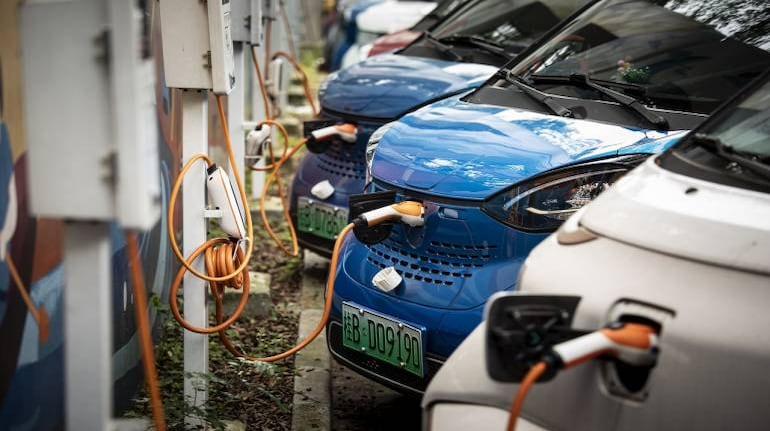



Price wars can be creative, or destructive.
When comparable airlines battle for market share, the results can be devastating. None are offering a fundamentally cheaper product, so the effect is only to make consumers expect cheaper tickets. When one of the players has a cost advantage, however — as when a budget airline takes on a full-service carrier — the outcome is to switch buyers’ loyalty to the better-value product. Four of the 10 most highly valued carriers in the Bloomberg World Airlines index are discounters.
We’re starting to see that situation play out in the auto industry. Since Tesla Inc. and Mitsubishi Motors Corp. started developing the first mass-market electric cars in the late 2000s, battery vehicles have struggled with a higher cost structure that even subsidies and manufacturer losses haven’t been sufficient to surmount. That’s finally changing — and China is leading the way.
That’s come on the back of a price war, instigated by Tesla, so savage that the government last month induced automakers to sign a pact pledging to compete fairly and refrain from “abnormal pricing.” (The latter commitment was retracted two days later.)
There’s no question that the fight for market share has been damaging. First-half auto sales in China have still not cleared the 11.8 million level achieved in 2018. An official measure of consumer confidence remains stuck at subdued levels not seen since the 1990s, after plummeting amid the Covid-19 lockdowns last year. Cratering imports in July are a clue to just how dire the state of demand remains across the economy. In their desperation to clear inventories, manufacturers have cut prices to the bone. Some of the steepest discounts have been on gasoline-powered cars.
Those numbers, to be sure, benefit from EVs’ exemption from China’s 10% vehicle purchase tax. BloombergNEF estimates that subsidy-free parity won’t come until 2025 for smaller cars in China. Still, to a consumer the sticker price is the sticker price — and the effects in terms of market share been stunning.
Across the market, battery and plug-in hybrid vehicles now account for 37% of sales, far ahead of earlier expectations. Beijing’s official policy, set at the end of 2019, was for 25% of the market to be electrified by 2025. Just three years ago, Deloitte — in a report that was generally extremely bullish about the prospects for EVs — predicted this level wouldn’t be hit until the end of the decade.
The latest run of results suggests the squeeze is over. June quarter net income at the world’s biggest cell business, Contemporary Amperex Technology Co., was up 54% from a year earlier, and increased four fold at South Korea’s LG Energy Solution Ltd. Analysts expect the same measure to double at BYD when it reports later this month (the company is one of the biggest battery makers as well as being a car manufacturer). Panasonic’s first-quarter result, helped by a one-time restructuring benefit, was the best of any quarter since the 1990s.
In most markets, gasoline-powered vehicles still maintain a cost advantage at the dealership, even if they’re increasingly more expensive when all ownership costs are factored in. But China is already passing through the looking-glass — and where it leads, the rest of the world will soon follow. The road to electrified transport has been a bumpy one, but the checkered flag is now in sight.
David Fickling is a Bloomberg Opinion columnist covering commodities, as well as industrial and consumer companies. Views are personal, and do not represent the stand of this publication.
Credit: Bloomberg

Discover the latest Business News, Sensex, and Nifty updates. Obtain Personal Finance insights, tax queries, and expert opinions on Moneycontrol or download the Moneycontrol App to stay updated!
Find the best of Al News in one place, specially curated for you every weekend.
Stay on top of the latest tech trends and biggest startup news.